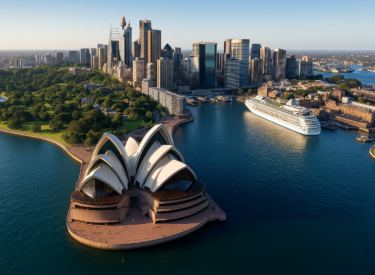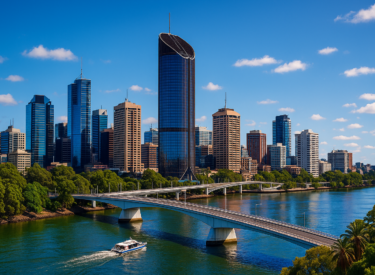
Key takeaways
A handful of regions dominate Australia’s economy, with just 10 areas producing 76% of the country’s GDP.
The urban corridor from Brisbane to Melbourne accounts for 54% of GDP, while Western Australia (mainly Perth) contributes another 16%.
The future will require smarter urban planning, transport solutions, and policies to spread economic activity more evenly across the country.
A select few areas in Australia generate most of our wealth.
Whilst some are often a very long commute from where many Australians live, in general more people want to live closer to these economic generators, hence the rising attraction for more compact living.
But most cannot fit into or afford to live in a downtown apartment.
More infill development is needed, coupled with better transport infrastructure, plus an active government programme to decentralise some of our knowledge-intensive work activities to our more suburban and regional settings.

A brief history
Just over 100 years ago, we were living our reputation, which is dependent on the bush.
About four million Australians lived on rural properties or in small towns of fewer than 3,000 people. Most were market towns, serving the agricultural economy.
Only a third of Australians lived in a city the current size of Toowoomba (i.e. over 100,000 people). Primary production, including mining, was almost all we did.
Post WWII, manufacturing took over from growing and digging things, accounting for a quarter of the workforce and a third of our GDP.
This led to a rapid rise in household wealth and a big shift to urban living, especially suburban homes.
By the time I was born – the mid-1960s (and yes, I know I look much younger!) – three out of five Australians lived in a major city.
Manufacturing has greatly influenced how our cities are laid out.
The industry needed cheap land.
The rise in car use and ownership helped make manufacturing and suburbia go hand in hand.
By the time I started high school – and yes, the best music is from the mid to late 1970s, no debate! - four out of every five trips were made by car.
Today
Fast forward to today and Australia is no longer driven by what we make, but rather by what, and who, we know.
Yes, mining has been pivotal to our economic growth, but it employs just 2% of the workforce and yet now only makes up 14% of Australia’s GDP.
In contrast, manufacturing holds a 5% market share these days, a crying shame if you ask me and something that needs fixing and fast, whilst the service industries account for 63% of our economic grunt.
Our economy is increasingly becoming knowledge-intensive, more specialised and much more interconnected.
Think, “specialisation of labour”, three very important words to grasp.
Australian pulse points
Did you know that just ten areas account for almost three-quarters of our economy?
That’s 76%…and that isn’t a typo.
And that some 54% of your GDP is held in the urban belt between Brisbane and Melbourne.
With another 16% held in Western Australia and mostly then in Perth.
It is little wonder that this is where most people live and the vast proportion of people move to, either domestically or from abroad.
My first map of this post maps the Australian economy.

Of course, in each major economic pulse point, business activity is more concentrated in some parts and less so in others.
In fact, many parts of Australia’s cities produce relatively low levels of economic activity, despite a lot of people living there.
Even regional economic activity and its growth are tied to our larger cities.
Regions within an acceptable commuting distance are typically growing much faster than more distant regions.
There are exceptions of course – but only a few - like in WA and regional Qld.
Many outer conurbation residents in these areas of low economic activity and commute to work in employment nodes.
Hence the increasing traffic!
More detail
My work is based on areas known as SA4s by the ABS.
SA4s (broadly) represent labour markets and generally have a population between 100,000 to 600,000 people.
There are 108 SA4s covering all of Australia, yet Gross Regional Product estimates are provided for just 88 SA4s.
These include 46 capital city SA4s and 42 SA4s in the rest of the state or regional areas.
Why?
Because businesses are more productive when they interact with larger numbers of customers, suppliers and competitors – and when they are forced to do so with more frequency.
Again, think “specialisation of labour”.
This is the real force shaping whatever lies ahead – urban development, jobs, investment, wage growth etc.
The same phenomenon applies when looking at why larger cities are more economically productive than smaller ones, or those in other parts of the country.














